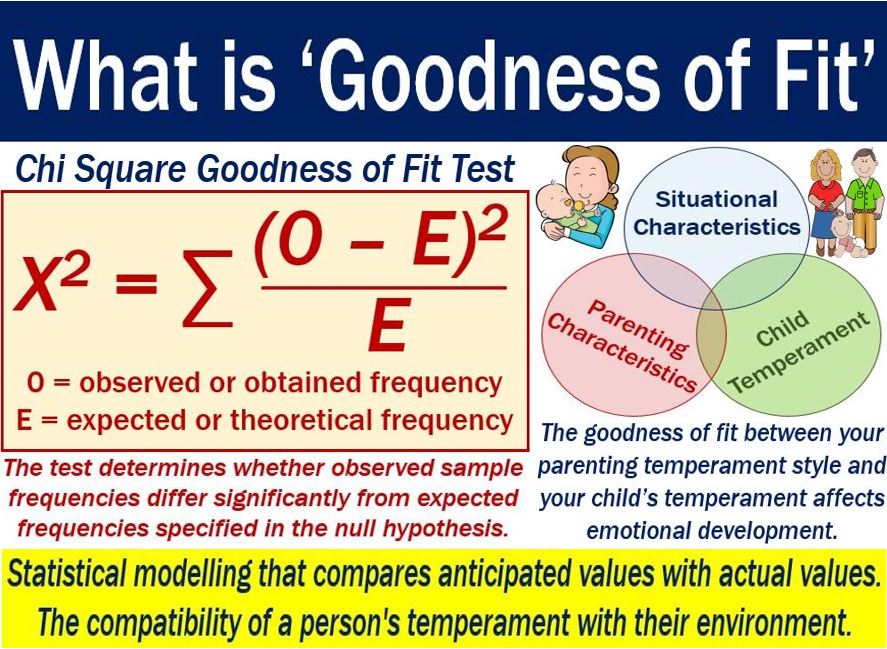Goodness of fit – definition and meaning
Goodness of fit is a term people use in statistics. It refers to how accurate expected values of a financial model are compared to their actual values. Put simply; the term refers to how accurate a survey is.
It is a regression analysis component. Regression analysis is a way, in statistical modeling, to determine which variables affect something that somebody is focusing on. It is a statistical method that people use in finance as well as several other fields. We use regression analysis to predict things. Specifically, making forecasts based on observed values.
According to Wikipedia:
“The goodness of fit of a statistical model describes how well it fits a set of observations.”
“Measures of goodness of fit typically summarize the discrepancy between observed values and the values expected under the model in question. Such measures can be used in statistical hypothesis testing.”
Goodness of fit test
Statisticians use the ‘goodness of fit test‘ to determine whether sample data is truly representative. For example, is the sample group truly representative of the wider population? In other words, does the test determine whether the sample data represents the data we would expect to find in the actual population?

There are many different types of tests. According to ‘Statistics How To,’ the most common ‘goodness of fit’ tests are:
- The chi-square.
- Kolmogorov-Smirnov.
- Anderson-Darling.
- Shipiro-Wilk.
This type of test is common in many different fields and professions. In fact, individuals who make business decisions often use goodness of fit tests.
Goodness of fit – psychology
People also use the term in psychology and parenting. It describes the compatibility of an individual’s temperament with the characteristics of their particular social environment.
All environments have unique features and demands. By environments, we are talking about lifestyle and family. Environment also includes the workplace.
In fact, goodness of fit is a crucial component in the emotional adjustment of a person.
Regarding goodness of fit, AlleyDog.com has the following example:
“Children with difficult temperaments, or temperaments that are at variance with their parents’, and grow up with parents who are rejecting or inconsistent, have more difficulty with adjustment and development than children with supportive and consistent parents (for instance, a “geeky” kid growing up in a family that values athletic achievement will have problems if the family rejects that child’s unique talents and interests.).”
Goodness of fit is an important component for children with emotional challenges. It is an important component in how well they will adjust to future situations.
There are, in fact, two kinds of ‘goodness of fit:’
- First, how a trait interacts with the environment.
- Second, how it interacts with individuals in that environment.
The Center for Parenting Education says the following regarding demands, expectations, and a child’s abilities and temperament:
“When there is a match between the demands and expectations of the environment and the child’s temperament and abilities, that is a good fit.”
“This makes success and high self-esteem more likely. When there is not a good fit, there is a greater risk for difficulties for the child.”
Video – Goodness of fit test
In this Khan Academy video, the speaker explains how to use the ‘Chi Square’ test. He presents an imaginary situation in which somebody is considering buying a restaurant.

